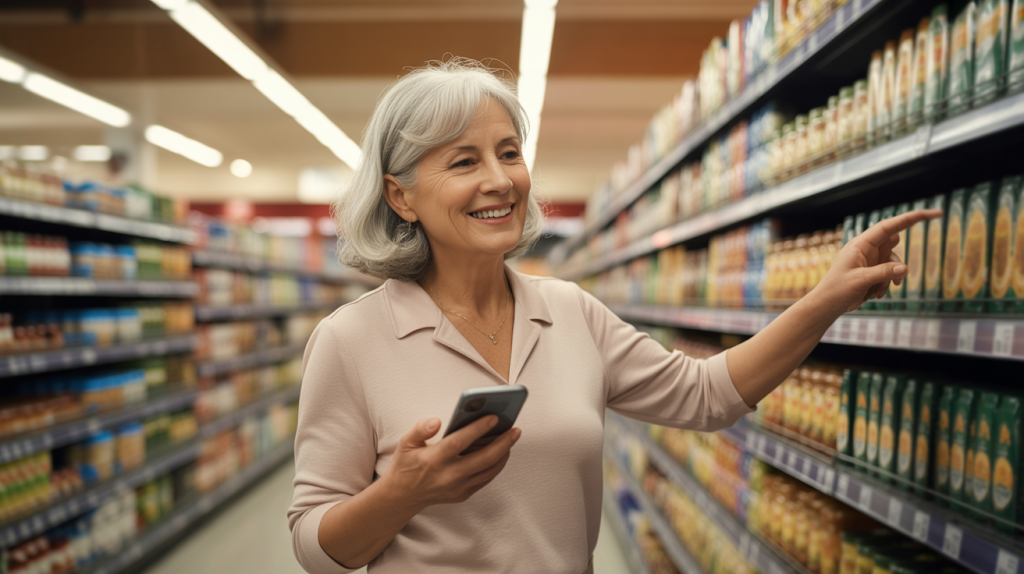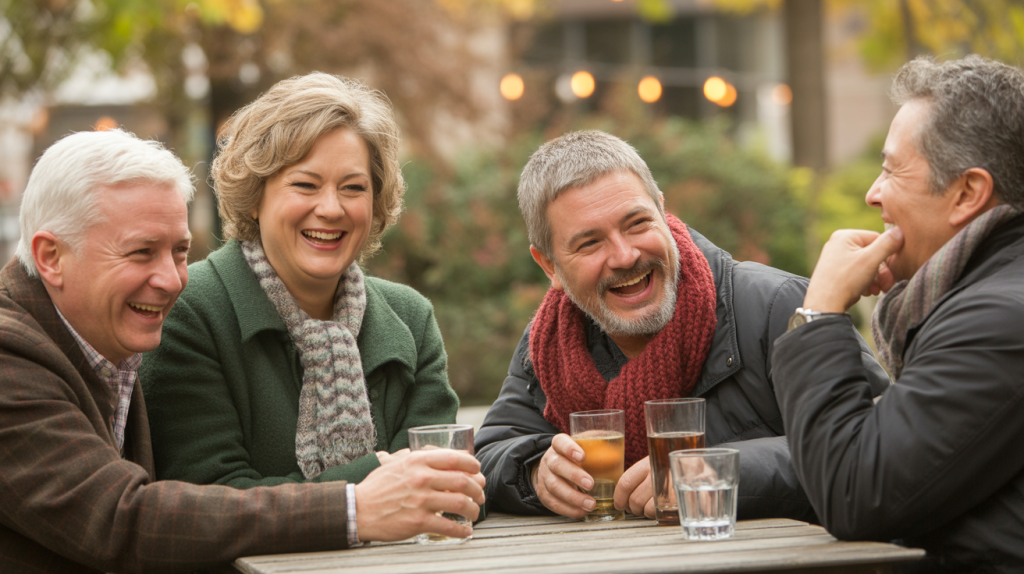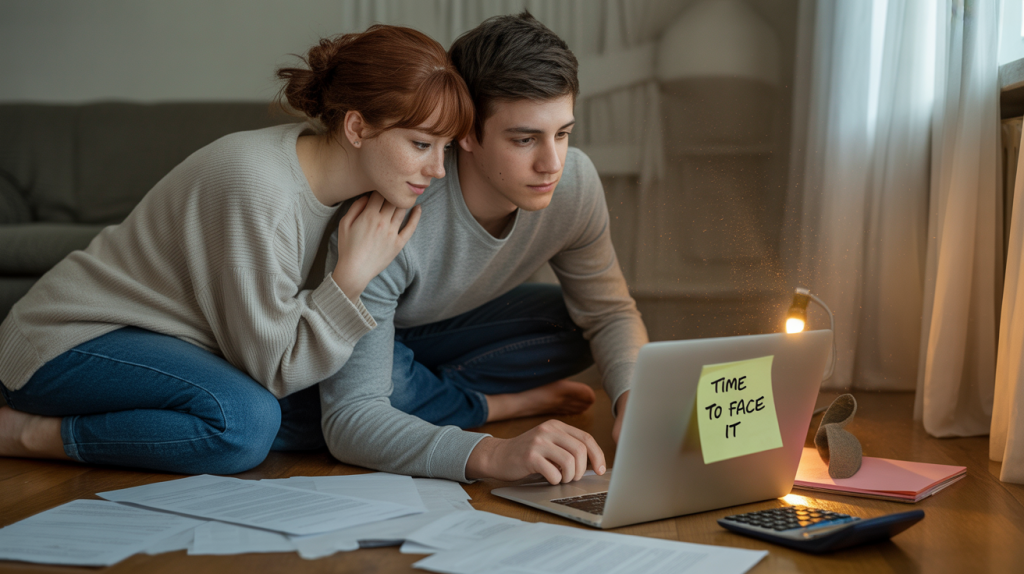My silver sedan isn’t just a car. For me, it’s the key to the life I worked so hard to build. It’s my chariot to my weekly breakfast with old work buddies, my transport to my daughter’s house an hour away for impromptu grandkid-sitting, and my vessel for those quiet, solo drives along the coast when I just need to clear my head.
Retirement was supposed to be about freedom, and for me, freedom has always had the faint scent of gasoline and the hum of four tires on an open road. But a couple of years ago, that freedom started to feel incredibly expensive. The numbers on the gas station signs started climbing, and each time I filled the tank, I felt a knot tighten in my stomach. The predictable comfort of my fixed income—a combination of my pension and Social Security—suddenly felt a lot less comfortable.
I remember the exact moment it hit me. I was reviewing my monthly credit card statement, a ritual I perform with a cup of coffee and a sharp pencil. I saw the line items for gasoline, and my jaw dropped. What used to be a manageable $150 or so a month had ballooned to nearly $350. It was a shocking figure, a number that represented canceled lunches with friends, a smaller birthday check for my grandson, or a dip into the savings I’d earmarked for a new patio set.
For the first time since I’d retired, I felt a flicker of fear. I started questioning my trips. Was seeing my grandkids this weekend really necessary? Could I skip the drive to the coast? The thought was deflating. My car, my symbol of independence, was starting to feel like a financial anchor. I knew I had to do something, but cutting back on driving felt like giving up a piece of myself. I wasn’t ready to do that.
The Wake-Up Call: When the Gas Pump Felt Like a Robbery
That $350 monthly gas bill became my obsession. I started paying close attention to the price per gallon, driving an extra mile to a station that was three cents cheaper. I tried to consolidate my errands into one long, meandering trip each week. It helped a little, but it was nibbling at the edges of a much larger problem.
My daughter, bless her heart, noticed my grumbling. During one of our Sunday phone calls, after I’d complained for the third time about the cost of driving to see her, she said, “Dad, have you ever tried using one of those fuel-reward apps? My friend swears by them.”
I’ll be honest, my immediate reaction was a mix of skepticism and annoyance. An app? I use my smartphone for calls, texts, and checking the weather. The idea of adding another complicated program to it, one that probably tracked my every move just to save a few pennies, felt like more trouble than it was worth. “It sounds like a gimmick, honey,” I told her. “I don’t have time to be fiddling with my phone at the gas pump.”
But the seed was planted. A few days later, sitting at my desk and staring at another projected budget that looked tighter than I liked, her words came back to me. What if she was right? What if I was letting my own stubbornness get in the way of a real solution? I felt a little foolish. Here I was, a man who had managed complex projects and budgets for 40 years at my job, and I was scared of an app. The cost of doing nothing was clear: a slow erosion of my freedom. The cost of trying was, at worst, a few minutes of frustration. I decided to swallow my pride and give it a shot.
My First Hesitant Step into the World of Fuel-Reward Apps
I started with a simple search on my computer: “best apps for saving money on gas.” A few names popped up repeatedly, but one called “Upside” seemed to get a lot of positive mentions. The premise sounded simple enough: you find a participating gas station in the app, “claim” the offer, fill up your tank as you normally would, and then upload a picture of your receipt to get cash back. No special codes at the pump, no new loyalty cards to carry.
It sounded almost too easy, which, of course, made me even more suspicious. But I downloaded it anyway. It asked for a few permissions and to link a bank account or PayPal for the cash back. I hesitated for a moment, then created a PayPal account just for this purpose, keeping it separate from my main checking account. It felt like a safe first step.
The next day, my gas light flickered on. This was it. I opened the Upside app in my driveway before leaving. A map popped up showing all the gas stations near me. To my surprise, my usual Shell station was on the list, offering 12 cents per gallon back. Another station a half-mile away, a BP, was offering 16 cents back.
My old brain immediately did the math. For a few extra blocks of driving, I could get a better deal. It was a small thing, but it felt empowering. I tapped the BP station on the map and hit the big “Claim Offer” button. A timer started, telling me I had four hours to complete my purchase. Okay, I thought. I can do this.
A Fumble, a Receipt, and a Surprising “Cha-Ching”
I drove to the BP, feeling a little self-conscious. I kept imagining myself holding up a line of cars while I stared blankly at my phone. But I reminded myself of the instructions: just pump gas as usual. So I did. I filled the tank, paid with my regular credit card, and got my paper receipt. No phone involved at all during the transaction.
I pulled into a parking spot away from the pumps to handle the next step. I opened the app again. It prompted me to take a picture of the receipt. I fumbled a bit, trying to get the whole thing in the frame without my shadow covering the numbers. After a couple of tries, I got a clear shot and hit “submit.” A message popped up: “Processing your receipt. You should see your cash back in 24-48 hours.”
And then I waited. I checked the app the next morning. Nothing. I checked it again that evening. Still nothing. My skepticism started creeping back in. “See,” I muttered to myself. “It was a gimmick.” I felt a pang of disappointment, not just about the money, but about my own failed attempt to be more tech-savvy.
But then, two days after I filled up, a notification lit up my phone. It was from Upside. I opened the app, my heart doing a little flutter. And there it was: “Cash back earned: $2.24.”
I know, I know. Two dollars and twenty-four cents is not a life-changing amount of money. But in that moment, it felt like I had won the lottery. It wasn’t about the amount; it was about the principle. It worked. I had taken a risk on something new, navigated the technology, and been rewarded with real, actual money. A small smile spread across my face. That little digital “cha-ching” was the sound of a door opening. This wasn’t a gimmick; it was a tool. And I was determined to become an expert at using it.
From One Small Win to a Full-Fledged Savings Strategy
That first $2.24 lit a fire under me. If I could save that much with minimal effort on a single fill-up, what else was I leaving on the table? My mindset shifted from skeptical to strategic. I was no longer just a driver; I was a gas-savings hunter, and these apps were my map and compass.
I started thinking about my routines. I realized that saving money wasn’t about one single action, but about layering several small, smart actions on top of each other. I began to see my weekly spending not as a series of separate transactions, but as an interconnected system of opportunities.
My daughter had mentioned something about her friend “stacking” rewards. I didn’t quite understand it at the time, but now, with my first taste of success, I was ready to learn. I realized that Upside was just one piece of the puzzle. There were other layers of savings I could add to maximize my return on every gallon.
The Power of Stacking: My New Financial Superpower
“Stacking” is just a fancy word for a simple concept: combining multiple discounts on the same purchase. It’s something I think our generation understands intuitively—we clip coupons from the newspaper and use them at a store that’s already having a sale. This was just the digital version of that same thrifty logic.
I decided to build my own personal gas-saving “stack.” It would have three main layers: the gas station’s own loyalty program, my grocery store’s fuel points, and a rewards credit card, all working in concert with the cash-back app that started it all.
Layer 1: The Gas Station’s Own Loyalty Program
My first target was the gas station itself. I had been going to the same Shell station for years out of habit, but I’d never bothered to sign up for their Fuel Rewards program. I always saw the signs—”Save 5 cents per gallon!”—but dismissed it as too much hassle.
Not anymore. I went online and signed up. It was free and took about five minutes. They linked the reward to my phone number. The next time I went to that Shell, I entered my phone number at the pump before inserting my card. The price on the screen immediately dropped by 5 cents per gallon. It was instant gratification.
The beauty of this was that it was completely separate from my Upside app. I would get the 5-cent discount at the pump, lowering my total bill. Then, I would still take a picture of that now-discounted receipt and submit it to Upside to get even more cash back on the final price I paid. It was my first successful stack, and I was hooked.
Layer 2: Turning Groceries into Gallons
The next layer was a game-changer. My wife, Sarah, and I do our weekly grocery shopping at our local Kroger. For years, I’d seen the signs about “Fuel Points,” but just like with the Shell program, I’d tuned them out as background noise.
I decided to investigate. I logged into my Kroger account online and saw that we had been passively accumulating points for years without ever using them. Every dollar we spent on groceries earned us one fuel point. Every 100 points equaled 10 cents off per gallon at the Kroger gas station or a participating Shell.
We had over 800 points just sitting there, unused. That was 80 cents off per gallon!
The following week, we planned a big shop before a family cookout. Our total came to just over $200. I watched the cashier scan our loyalty card and later checked the app: 200 new fuel points had been added to our account. We now had enough for a full $1.00 off per gallon.
The next time I needed gas, I drove to the Kroger fuel center. I entered my phone number, and the price on the pump plummeted from $3.59 down to $2.59. Filling up my 14-gallon tank cost me $36.26 instead of $50.26. That was a staggering $14 in savings on a single fill-up. It felt incredible. I was literally turning our food budget into fuel for my car. This wasn’t about saving pennies anymore; this was saving serious, noticeable money.
Layer 3: The Final Polish with a Rewards Credit Card
The final layer of my stack was my wallet. I’d been using the same generic cash-back credit card for everything for over a decade. It gave me a flat 1.5% back on all purchases. It was fine, but it wasn’t strategic.
I did some research and found a no-annual-fee credit card that offered 3% cash back specifically on gasoline purchases. Making the switch was simple. I applied online and was approved in minutes.
Now, every gas purchase was the final step in my master plan. I would pay at the pump with this new card, earning double the cash back I used to get. This was the icing on the cake. The 3% back was calculated on the final price I paid *after* all my other discounts from the loyalty programs and fuel points had been applied.
My strategy was complete. I felt like a general commanding his troops. Before, I just drove up to the pump and paid whatever price was on the sign. Now, I was in control. I had a system that actively worked to lower that price for me at every possible turn.
The Bumps in the Road: My Mistakes and What I Learned
Of course, becoming a master strategist didn’t happen overnight. My journey was filled with small, frustrating mistakes that taught me important lessons. Thinking back, these fumbles were just as important as my successes because they refined my process.
I vividly remember one Tuesday afternoon. I was running late to meet a friend and noticed my tank was almost empty. I pulled into the nearest gas station, filled up, and drove off. It was only when I was halfway to the restaurant that I had that sinking feeling: I had forgotten everything. I hadn’t checked Upside for an offer. I hadn’t gone to a Kroger or Shell to use my points. I just paid the full, undiscounted price. I probably left five or six dollars on the table because I was in a hurry. It stung, but it taught me my most valuable lesson: planning is everything. Saving money this way requires a small mental shift. It’s not something you can do on autopilot, at least not at first. You have to make it part of your pre-trip routine, like grabbing your wallet and keys.
Another time, I claimed an amazing offer on Upside—25 cents back per gallon!—but got distracted by a phone call while I was driving. I ended up going to a different gas station just a block away out of sheer habit. When I tried to upload the receipt later, the app rejected it. The offer was only valid at the specific station I had claimed. I learned that attention to detail is critical. These apps are precise, and you have to follow the steps exactly as they’re laid out.
There was also the challenge of getting Sarah on board. She’s less concerned with the details than I am, and at first, she found my new obsession a bit tedious. “Do we really have to go to the Kroger gas station? This one is right here,” she’d say. It took a few conversations and one key moment to win her over. I showed her the savings report in my little notebook where I was tracking everything. When she saw we had saved nearly $50 in one month, her eyes widened. “Okay,” she said. “I get it now.” It taught me that sometimes you need to show, not just tell. The concrete results were more persuasive than any explanation I could give.
These little hiccups weren’t failures; they were tuition. They cost me a few dollars here and there, but the education I received was priceless. It helped me build a system that was not just effective, but also resilient and second nature.
My Weekly Gas-Saving Ritual: A Step-by-Step Look
After a few months of trial and error, I settled into a comfortable and efficient routine. It might sound complicated when I write it all out, but in practice, it only takes about two minutes and has become as automatic as checking for traffic before I leave the house.
Here’s what my process looks like whenever my gas light comes on:
Step 1: The App Reconnaissance. Before I even put my shoes on, I sit down with my phone. I open the Upside app first. I scan the map to see which stations near me are participating and what their current offers are. I’m looking for the best combination of location and cash-back amount.
Step 2: The Grocery Point Cross-Check. Next, I open my Kroger app. I check my current fuel point balance. This is a crucial step. If I have a lot of points saved up (say, 500 or more, for 50 cents off), it’s almost always worth it to go to the Kroger fuel center, even if the Upside offer there isn’t the absolute highest. The massive discount from the points usually outweighs a few extra cents of cash back from a different station.
Step 3: Making the Decision and Claiming the Offer. With that information, I make my decision. Let’s say today, a Shell station has a 15-cent offer on Upside, and I have 300 Kroger points (30 cents off) that are redeemable at Shell. That’s my winner. I tap on that Shell station in the Upside app and hit “Claim Offer.” The four-hour timer starts ticking.
Step 4: The Fill-Up Execution. I drive to the designated Shell station. The first thing I do at the pump is enter my phone number for the Shell Fuel Rewards. The price on the screen instantly drops by at least 5 cents (or more, depending on my status). Then, the pump asks if I want to use my Kroger points. I hit “Yes,” and the price drops again, this time by another 30 cents. The price has now been slashed by a total of 35 cents per gallon before a single drop of gas has entered my tank.
Step 5: The Final Steps. I fill up my tank and pay with my 3% cash-back credit card. I make absolutely sure to get a printed receipt. Before driving away, I take a moment in a parking spot to open Upside, snap a clear photo of the receipt, and upload it. Done.
The magic happens over the next few days. I see the cash back from Upside appear in my app. At the end of the month, I see the 3% cash back from my credit card on my statement. The savings from the fuel rewards and grocery points were immediate, right at the pump. By layering these actions, I’ve attacked the price of gas from four different angles.
The Tangible Results: What a Year of Smart Savings Looks Like
After about six months of my new routine, I sat down with my little notebook and my credit card statements. I wanted to see if my efforts were truly paying off or if it was just a feel-good exercise. I added up the cash back from Upside, the estimated savings from my grocery and station rewards, and the extra cash back from my new credit card.
The numbers were better than I had hoped. I was consistently saving between $40 and $60 every single month. In months where we had a big grocery shop before a family gathering, the savings sometimes topped $70.
Over the course of a year, my little “gimmick” was putting more than $600 back into my pocket. Six hundred dollars! That was the cost of a round-trip flight to visit my brother. It was a new set of tires. It was nearly two full months of what my gas bill used to be at its peak.
Seeing it all laid out in black and white was profoundly satisfying. It was proof that my time, my research, and my willingness to overcome my initial hesitation had resulted in something real and substantial. It wasn’t just about saving a few cents; it was about taking a significant bite out of a major household expense.
More Than Just Money: Reclaiming My Freedom
But the real impact of that $600 wasn’t the number itself. It was what that money represented. It was the complete erasure of the financial anxiety I had felt every time I approached a gas station.
The knot in my stomach was gone, replaced by a sense of quiet confidence, even a little bit of pride. I had faced a problem that was actively diminishing my quality of life, and I had tackled it head-on with intelligence and perseverance. I had refused to let rising prices dictate the terms of my retirement.
That extra money in our budget translated directly back into the freedom I had been so afraid of losing. When my daughter called and said, “Dad, can you watch the kids on Friday?” I didn’t have to mentally calculate the cost of the 120-mile round trip. I just said, “Of course, I’ll be there.”
When Sarah and I were sitting on the porch one sunny morning and she said, “You know, I’d love to take a drive out to the lake today,” I didn’t hesitate. My answer was, “Let’s go.”
Those moments are the real reward. The savings system I built isn’t just about money. It’s a tool that fuels my independence. It ensures that my silver sedan remains a symbol of possibility, not a source of stress. It allows me to live my retirement years with the spontaneity and joy I always imagined.
My Final Thoughts and Encouragement for You
Looking back on this journey, I realize I learned more than just how to use a few apps. I learned that it’s never too late to learn something new, and that technology, which can sometimes feel alienating, can also be a powerful ally in preserving our financial well-being.
I learned that small, consistent efforts compound over time into remarkable results. Saving 15 cents a gallon doesn’t feel like much in the moment, but when you do it consistently, and stack it with other savings, it changes your entire budget.
Most importantly, I learned that taking control of even one small area of your finances can have a ripple effect on your entire sense of security and freedom.
If you’re feeling that same pinch I felt, that same anxiety when you look at the gas pump, I want to encourage you to take that first, hesitant step. Pick one app. Sign up for one loyalty program. Start small. You don’t have to become a master strategist overnight. Just start.
There might be a moment of frustration or a mistake along the way, but don’t let it deter you. The feeling of seeing that first bit of cash back, of watching the price drop at the pump because of a choice you made, is incredibly empowering. It’s a reminder that you are still in the driver’s seat, in more ways than one.















